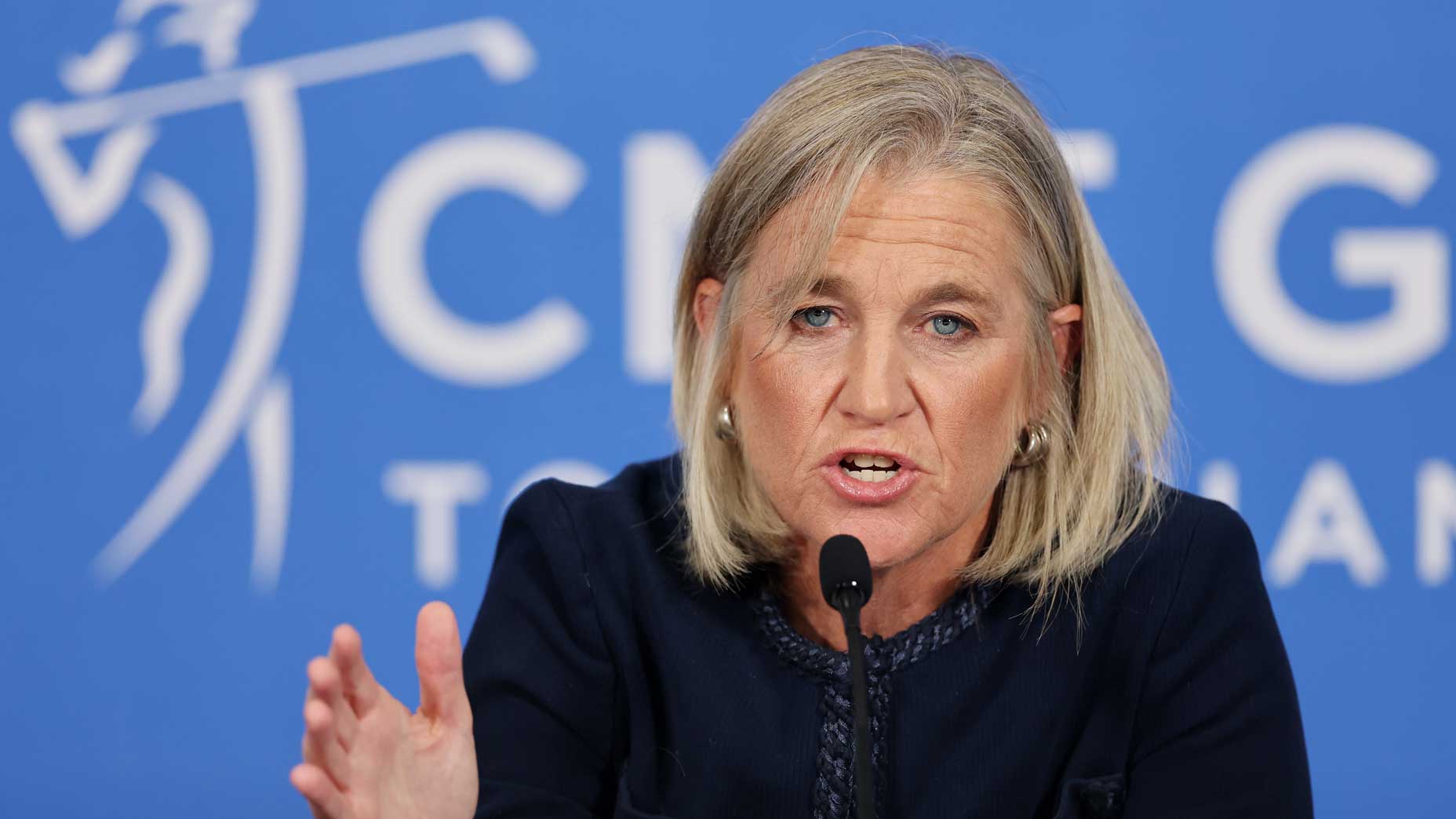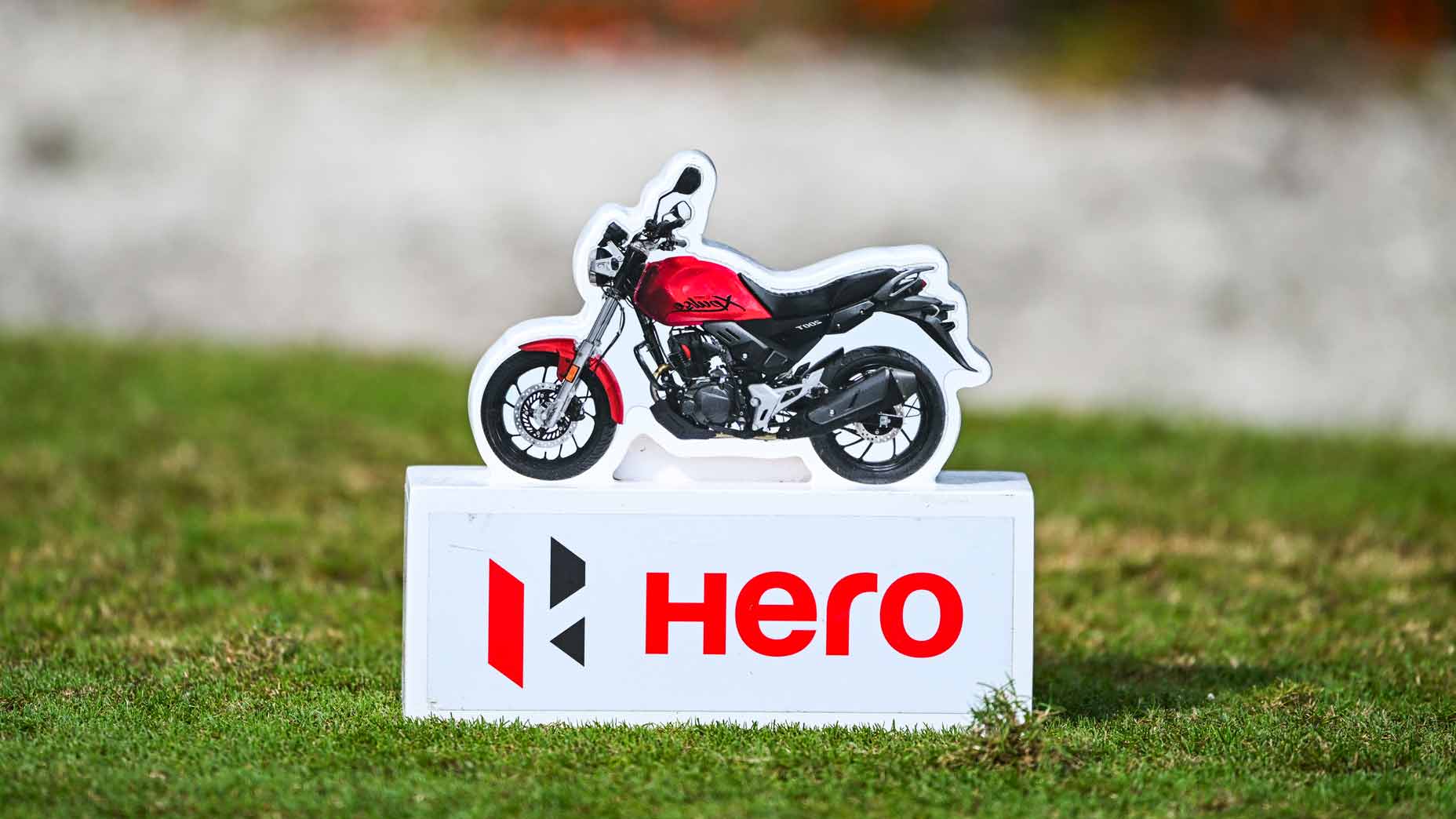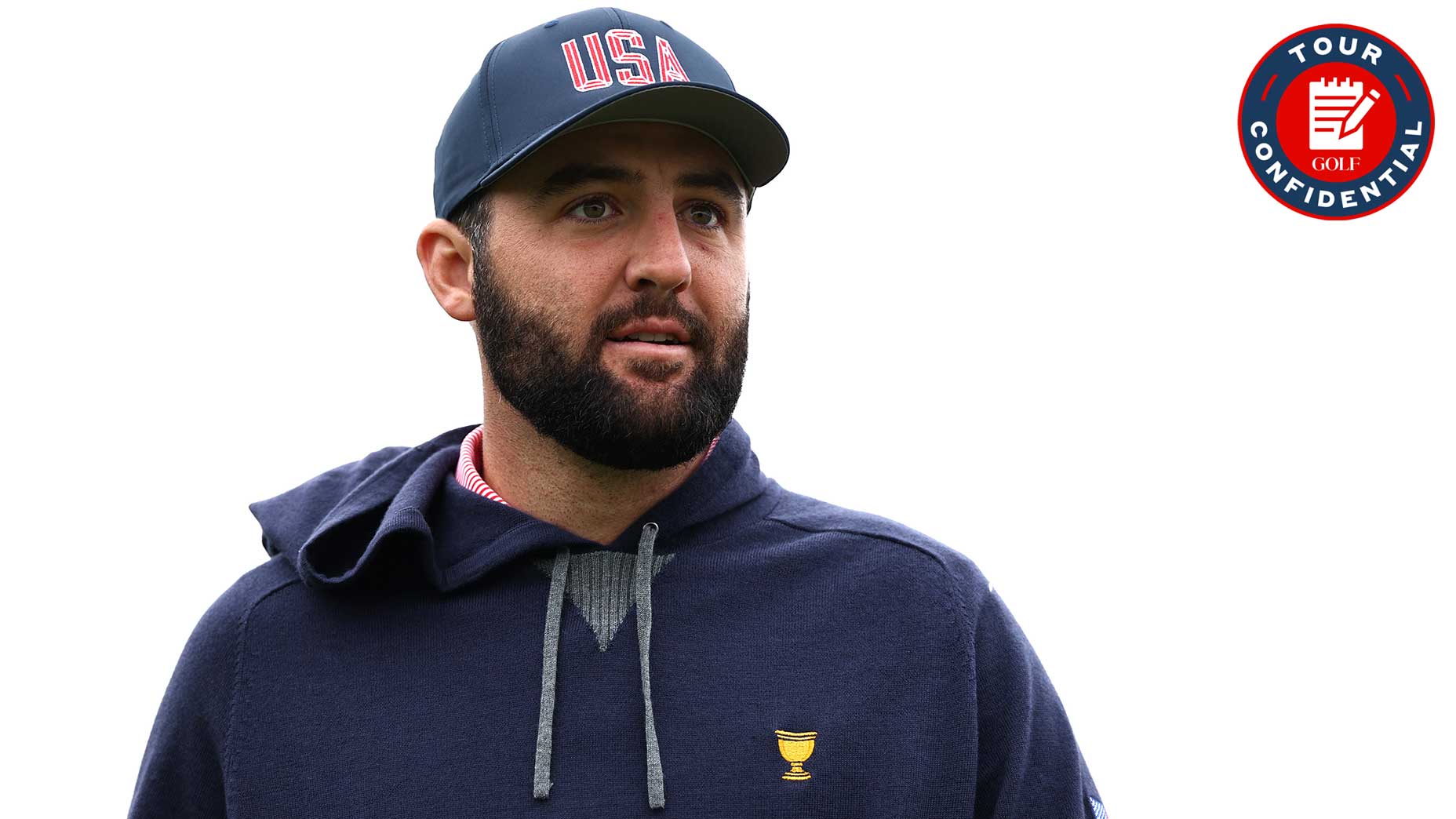 LIV moves, Tiger’s presser, Ryder Cup difference | Monday Finish
LIV moves, Tiger’s presser, Ryder Cup difference | Monday Finish
Tour Confidential: Will the PGA Tour *actually* resume in June?

Check in every week for the unfiltered opinions of our writers and editors as they break down the hottest topics in the sport, and join the conversation by tweeting us @golf_com. This week we discuss the PGA Tour’s return, the option to play without fans, the week without the Masters, Michael Jordan golf stories, hole design and more.
1. The PGA Tour announced its new schedule this week, as it attempts to return from its hiatus due to the coronavirus. Up first is the Charles Schwab Classic in Fort Worth, Texas, on June 11. The first four events will be played without fans, and Tour commissioner Jay Monahan said that the Tour will not play without coronavirus testing or clearance from health officials. How realistic is the Tour actually resuming in June?
Sean Zak, senior editor (@Sean_Zak): I’ll call it a 50/50 chance right now. Many models would tell you that the death rate of the coronavirus will (hopefully) be under control by late May, which would lend you to think that life could make moves toward “normal” again. Could the Tour create a bubble of sorts at the Colonial, where only the most essential people would be? Perhaps. I think the more pressing question that we’ll have to answer in late May is “Should the Tour do this?”
Alan Shipnuck, senior writer (@Alan_Shipnuck): I think 50/50 is optimistic, to say the least. I deeply hope widespread testing is available by the beginning of June, but right now we’re barely scratching the surface nationally. Can that change in five weeks? I’m dubious.
Josh Sens, senior writer (@JoshSens): Not out of the question but seems ambitious. If it’s not easy for everyone in the country to get tested by that point, how will it look for a bunch of professional golfers to have ready access to the test? There are plenty of factors to consider beyond testing, as well, as players come in from far and wide for the event and then scatter to various locations before getting back together for the next event. Other sports have talked about creating bubble-like environments, with competitions kept to single venues and athletes housed in a consistent location. Is that what the Tour is going to ask of the players? Will they be allowed to go home and then come back out again? I’m hoping it can happen, but at this point, there are far more questions than answers.
Josh Berhow, managing editor (@Josh_Berhow): I don’t think it happens. The pessimistic side of me thinks there is just too much room for error right now, and, more importantly, this needs to be 100 percent safe for players, caddies, staffers, etc., and if it’s not, it’s not worth the risk and bad PR. To me, it just seems like there’s too much that needs to happen and go right to hold a sporting event by then, even one like golf, where social distancing is easier by nature. That said, I’ve never wanted to be proven wrong more in my life.
Dylan Dethier, senior writer (@dylan_dethier): To me, the trickiest piece doesn’t seem like the first tournament but actually the second. It’s one thing to post up at a venue for a while — it’s another to get the whole traveling circus to the next city, the next week. Fingers crossed.
2. Former PGA Tour player Ian Leggatt, speaking with scoregolf.com, questioned the safety and practicality of the Tour’s decision. “I’m not a big fan of where they’re heading,” he said of the Tour. “I don’t think anyone understands the real guidelines or how difficult this is going to be.” What lingering questions do you have and what’s the best way to solve them?
Zak: How much testing can the PGA Tour do that doesn’t come at the cost of testing elsewhere? Aka, can the PGA Tour acquire enough testing resources that it wouldn’t be taking away from other more necessary testing? Best way to do that, I’d imagine, is to work constantly with the federal and local governments in each location where the Tour plans to play. Like I said above, this still feels like a pipe dream, but we gotta have dreams, right?
Shipnuck: It really comes down to testing. You gotta be able to determine the status of every single person at the tournament venue on a daily basis – players, caddies, swing coaches, equipment technicians, rules officials, caterers, security, reporters, TV cameramen. Otherwise, I don’t know how you bring them together from all over the country.
Sens: The Tour is planning to come right out of the gate holding events every week. Given incubation periods and testing logistics and other variables, that’s not enough time to measure what impact one event has had before the next one starts. Doesn’t the Tour want to be able to gauge that so it can calculate the costs and benefits? What happens if you hold three straight weeks of events only to learn at the end that those events have caused a much higher spike than you anticipated? Most importantly, that would be a terrible public health setback. But it would also be a public relations disaster for the Tour. It’s a tricky balance to strike, and, as with so much else these days, I don’t know where the right middle ground is. A less pressing question, but is the Tour going to require players and caddies to wear masks, at least while walking between shots? Couldn’t hurt from a public health standpoint, to say nothing of the optics.
Berhow: Basically what I said in the previous answer: How can everyone be safe? Something like this really hasn’t happened before, which means it’s going to be really difficult to make sure everything is done correctly, and that means testing, hotel rooms, player shuttles, etc. One slip-up with something, and it could be bad news. As for the good news? You know the Tour (and the city of Fort Worth) is well aware of this, so it’s obviously going to do everything in its power to make sure this event can happen smoothly. It will be interesting to see what the field looks like when the event gets closer. We’ll be able to see right away just how comfortable players are by seeing which names are in and which ones aren’t.
Dethier: The simplest question is the most difficult to solve: What happens if (when!) someone tests positive?
3. The new schedule shuffled around a number of tournaments. Who or what are the biggest winners? And who or what are the biggest losers?
Zak: The wraparound season is the biggest winner! Some of those events can’t dream of drawing a top 10 player, but you’d have to imagine more pros might tee it up at the Safeway Open with a major lurking one week in the future. I think the Mayakoba event is unfortunately a loser having to play during the same weekend as Tiger’s Hero World Challenge.
Shipnuck: If things go on as planned, no doubt many non-glamorous will get a huge bump as bored/cash-strapped pros are dying to play more after this enforced off-season. To cite one example, the 3M Open should attract a strong field, as players try to round into form ahead of the PGA Championship. But I think the WGC in China will take a hit as many top players decide to stay home, rest up and try to peak for the ensuing Masters
Sens: If they can pull off the Colonial in June, that event will be a TV-ratings bonanza, with all the pent-up viewer demand. We’re talking Masters-like numbers. A huge opportunity for the Tour and the event to put their best foot forward in front of a lot of eyeballs. The biggest loser? The (canceled) British Open and all of us who love that event.
Berhow: The 3M Open! It was previously stuck between the Open Championship and Olympics, but now it’s the week after the Memorial and two weeks before the PGA Championship. Much better spot. I don’t like the change for the Safeway, even though Sir Zak does. It’s now a week after the Tour Championship and a week before the U.S. Open, and its location to those two events isn’t great. Not everyone likes to play a week before a major, so that’s bound to hurt it.
Dethier: The Greenbrier seems like a natural call for biggest loser, since it went from a Tour mainstay to literally no longer existing. We’re all big winners, if they can pull this off. But one especially bright spot would be pulling off a Winged Foot U.S. Open in September. The course would be in prime shape, and it would bring a nice lift to a region obviously rocked by the virus. We can hope.
ADVERTISEMENT
4. In an Instagram Live session last week, Brooks Koepka told his swing coach, Claude Harmon III, that Rory McIlroy’s driver “might be the greatest weapon of any player in this generation.” Agree? If not, which part of which player’s game is more valuable?
Zak: Brooks is right – Rory’s driver is the greatest weapon – but I think 80 percent of the Tour would trade their iron-game for Adam Scott’s, in the same way that Scott would trade in his putter for 80 percent of the Tour’s.
Shipnuck: Two years ago, Spieth’s putter would have been on the short-list, but probably not anymore. Stenson’s 3-wood also deserves a mention. I’d say Bubba’s and DJ’s drivers merit consideration, but ultimately Rory wins the tie-breaker.
Sens: Tiger’s mind.
Berhow: Physical tools? Rory’s driver. Other intangibles? Sens is right with Tiger’s mind. Forget about the guy’s ability to close and how he’s able to block out the ridiculousness he gets from the gallery – he’s also overcome the chip yips! Although some say you never actually are cured of the chip yips, you just figure out a way to put a band-aid on them and go forth. Even if it’s the latter, that’s amazing.
Dethier: Tiger’s irons. More specifically, Tiger’s distance control with his irons.
5. The first two episodes of ESPN’s long-awaited Michael Jordan documentary dropped Sunday evening. Forget basketball! When it comes to His Airness, what’s your favorite golf yarn?
Zak: When MJ dunked on Keegan Bradley after Keeg’s tried trash-talking about their golf match. We can all LOL at the idea of AirKeegans.
Shipnuck: I just love that he shows up at practically every Ryder Cup. I’ve walked in Jordan’s wake a few times, and the energy he brings is incredible.
Sens: On the one hand, I’m impressed that he reportedly once lost $1.25 million to a golf buddy in a single week. But then I think a little more and realize that that’s about the same as me losing five bucks, so maybe that’s the point. He makes the ridiculous seem ho-hum.
Dethier: After MJ ragged on Obama’s golf game, calling him a “hack,” Obama fired back: “There is no doubt that Michael is a better golfer than I am. Of course, if I was playing twice a day for the last 15 years, then that might not be the case.” It gets to the most ridiculous thing about Jordan and golf — the sheer volume. The guy plays two rounds on a slow day. He built his own freakin’ golf course just because Florida’s most private clubs weren’t enough. This is a man who plays the game by his own rules.
Berhow: Rickie Fowler once said he’ll play you for “whatever makes you scared,” which is pretty great. The only time I’ve ever seen MJ in person was at the 2016 Ryder Cup. I was crouched behind a tee box and everyone started screaming in my direction, which terrified me for a second until I realized whom they were yelling at. Jordan was just a few feet from me smoking a cigar as big as my forearm. Shoulda told him I once made a gamer-winner in sixth grade.
6. This week, GOLF.com revealed the 10 finalists for the GOLF + Nicklaus Design Challenge. Put on your designer cap and tell us what *your* dream par 4 looks like?
Zak: As someone who majored in the Big Right Miss, as well as the Pinestraw Punch-out, my dream par-4 is somewhere down in the Carolinas, with a pretty big fairway that blends right into the waste area/pinestraw. Tall pines on either side, but a bit less dense along the right so I can punch out. OK, you caught me describing the fourth hole on Pinehurst No. 2. SORRY. I just love that one a lot.
Shipnuck: Who doesn’t love a drivable, risk-reward par-4?! They come in various shapes but give me a chance at glory and I’m pulling the driver every single time.
Sens: I’m with Alan. A driveable par-4 with all kinds of punishment if you get bold and miss. Specifically, I’m thinking of the par-4 sixth hole at Pacific Dunes, on a day when the wind allows you to get there. Plenty of bailout right. Heroic possibilities for the aggressive line. But also hellish pain if you find the giant bunker on the left.
Dethier: The stranger and more scenic the better. When I made it to my first Open Championship last year, I spent a few days exploring the links of Northern Ireland, and my most memorable stop came at Ardglass. To walk onto the first tee, you step through the remains of a 15th-century castle (now the clubhouse!) and play along the ocean to an elevated green in the whipping wind. It’s the start of a grand adventure.
Berhow: A short par-4 all day! It gives bogey golfers a birdie chance, and put some trouble by the green to make sure the better players have to give it a think on the tee. A small bail-out area on one side of the green (with a bad angle in) and a hazard on the other side of the green and you got yourself a nice little golf hole I’d love to make a workin’-man’s bogey on.
To receive GOLF’s all-new newsletters, subscribe for free here.
ADVERTISEMENT








